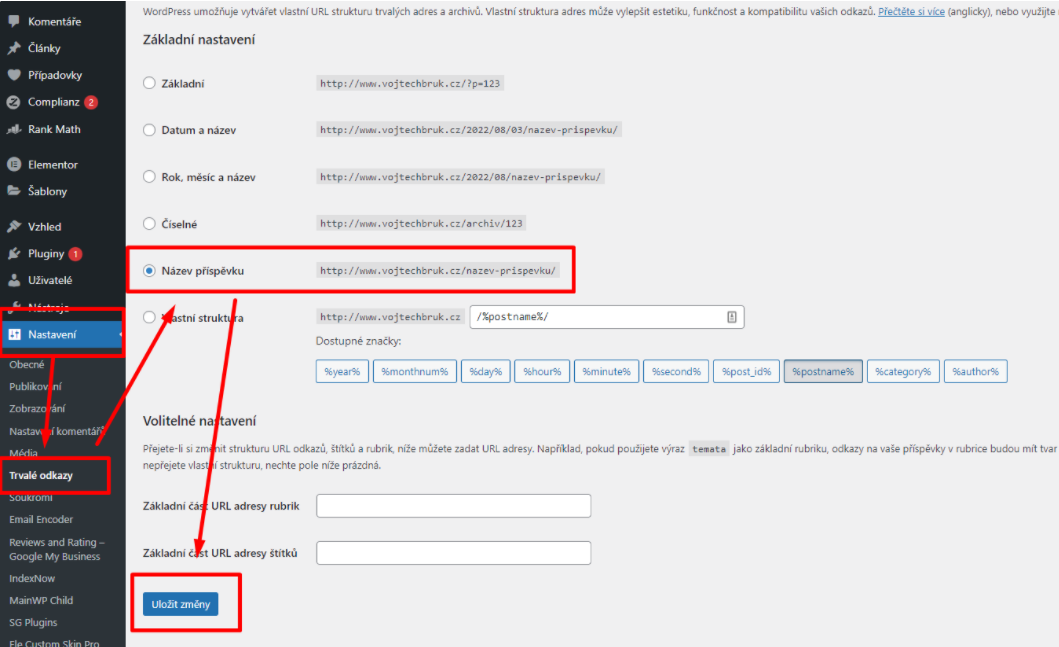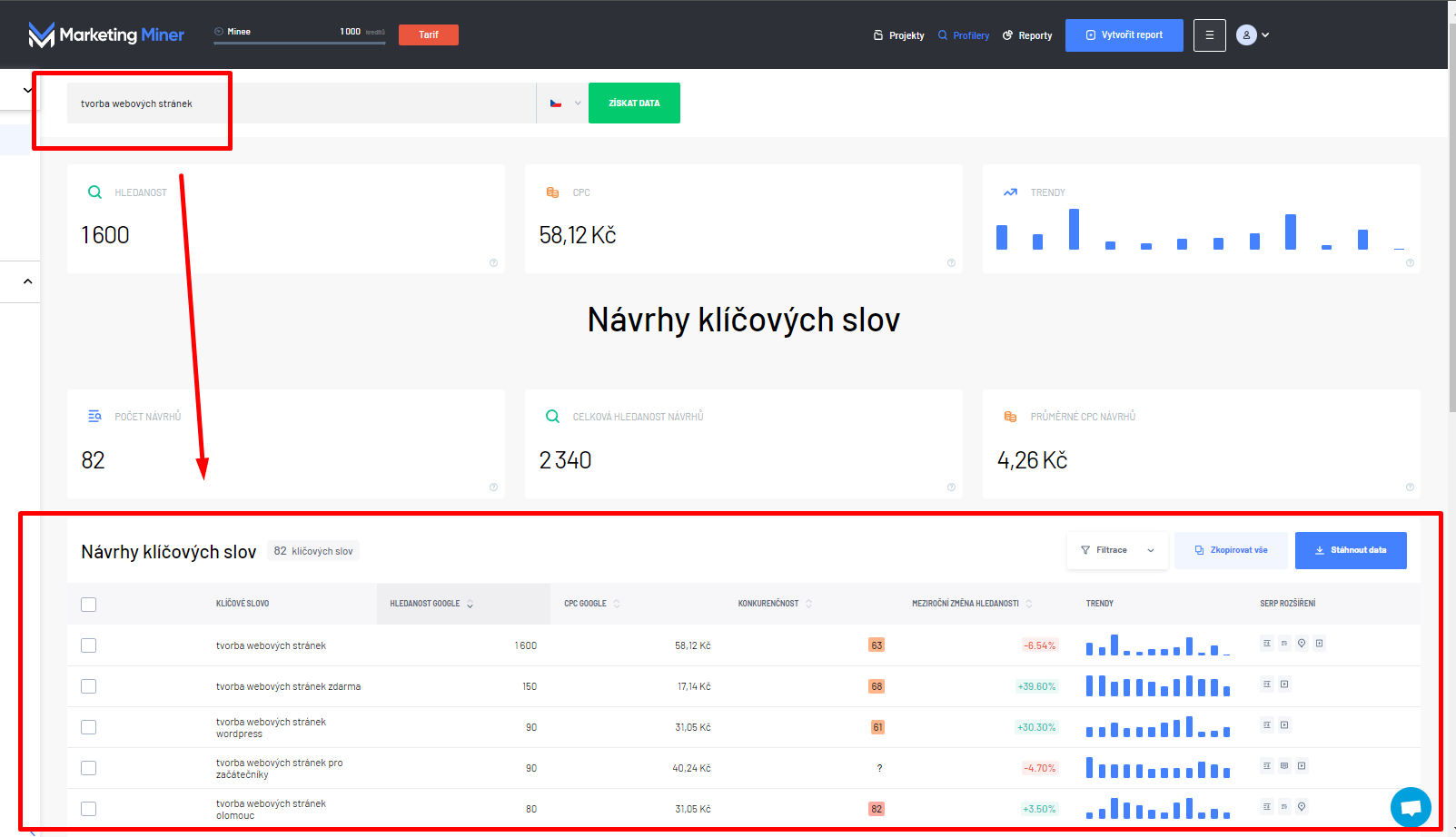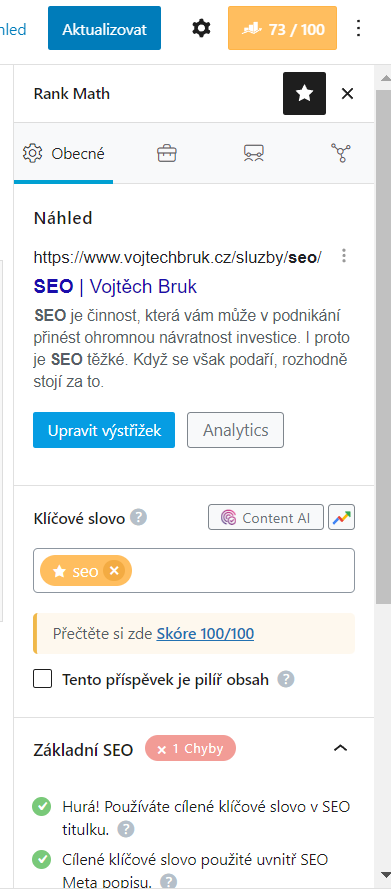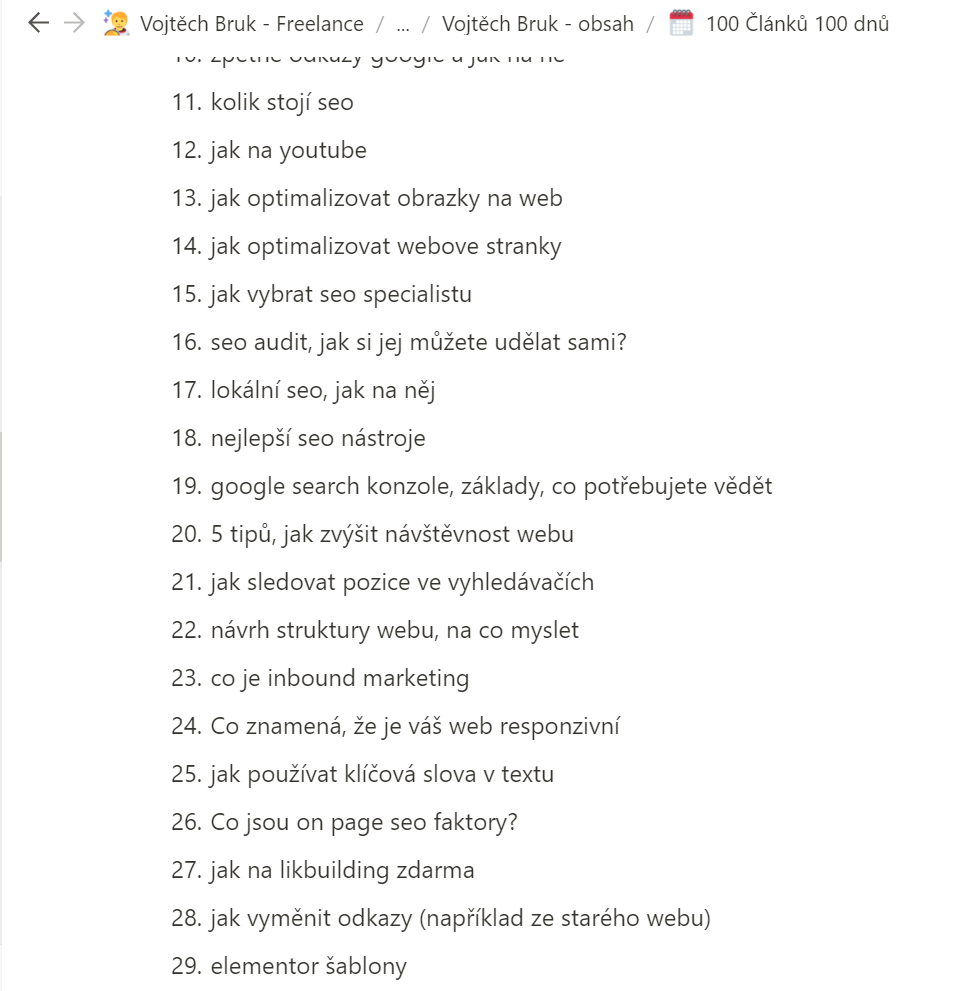SEO is important. But not like “wishing a colleague a happy holiday from the second floor”. SEO is important in life. While it may seem lengthy, boring, complicated, it nevertheless determines your online (un)success.
This is why it is worth paying maximum attention to it. And in time, you’ll find that it’s actually quite fun. Especially when it bears fruit.
In this handy article, we’ll start with some essential definitions and then look at practical tips you can use today to start improving your SEO.
What does the acronym SEO stand for?
SEO means “search engine optimization” in English. Hence the raised eyebrows of many SEO consultants when you use the phrase “SEO optimization” – since the word optimization is already included in the abbreviation SEO.
And yes, it really bothers some people.
Personally, it strikes me as similar to someone talking about “ROI return” with the caveat that the return is also already included in the acronym (ROI = return on investment). I think content is always more important than form, and it’s important that everyone knows what is meant.However, if you want to appear educated, the SEO optimization connection is best avoided.
What is SEO?
According to Wikipedia, SEO is the process of “improving the quality and quantity of traffic to a website from search engines. SEO focuses on unpaid traffic (called “natural” or “organic” results), not direct or paid traffic.”
The definition also mentions that non-paid traffic may come not only from text search results, but also from image searches, video searches, academic searches, voice searches, etc.
Now that you know what SEO is, it will come as no surprise that SEO content could be roughly defined as:
“Online content created for the purpose of ranking well in search engines (like Seznam or Google). This content is usually optimized around specific keywords.”
However, that very optimization can often be relatively lengthy and challenging. Especially if you’re not in the business of SEO forging, it can be easy to become overwhelmed by the process. And in the worst case, it can even discourage you from creating content altogether.
And that would be a great shame.
Content is king. That much is known. According to HubSpot, companies that regularly publish blog posts have 350% more website traffic than those that don’t regularly publish content.Small businesses and freelancers can then see even greater benefits from regular publishing, as in addition to traffic, it can give them a position of authority, exposure to customers and, in a way, a big competitive advantage.
So publishing is better than not publishing. No question.
So is it “just” enough to publish?
Yes and no. I believe that if you consistently write about one topic, the results will come. Even assuming you’ve never heard of SEO in your life.
Search engines are smart.
However, it’s like throwing darts at a target blindfolded. If you throw 5 of them, every day, there’s a good chance that at the end of the month a few will be in the middle of the target.
With your eyes open, however, there will be many more.
And that’s exactly SEO. Leverage for your efforts.
How do I get started?
By reading and implementing this article.
I’ve written this as painless as possible SEO guide to add a few SEO elements to your creative efforts that will have a massive impact.
Minimalism > exhaustion and overwhelm. That’s how this guide is conceived. It’s also primarily focused on content creation. And while Google has stated that content is EXTREMELY important and one of the top three ranking factors, it is not the only one.So unless you are creating content and for some reason don’t want to, you will have limited benefit from this guide. However, most of the advice can be applied to the web as a whole.
Mental Model for SEO
If you want to be successful at anything, you have to understand it first. And there’s no better way to understand something than through mental models.
There are a number of them in SEO: SEO as a set, SEO as a marathon, and you could find dozens more.
Personally, I think of SEO using two models, one is suitable for hobby projects in case you want to go it alone, the other is suitable for larger sites where the success of the whole business can stand and fall on SEO.
SEO as passive investing
If you’ve ever been interested in passive investing (you send money once a month, usually to a fund, where it then appreciates in value) you’ve probably memorized a few of its principles:
- The results are exponential. They’re not visible right away, but over time they’ll be much larger than you’d expect due to compound interest
- The key is regularity and removing emotion from the game. One of the most effective ways to invest is to do your research at the beginning, choose the right broker, a quality ETF with minimal fees, and then set up a standing order and buy the title every month. Whatever the market situation.
- It’s a giant lever. You can use this lever most effectively if you start as early as possible and use it long term.
All of the above principles can be applied to SEO as well. If you want to increase your chances of success, create an SEO routine (based on this article) and then just follow it.
Don’t expect quick results. On the contrary. Be like an investor who knows that results are exponential, but is also well aware that every exponential is essentially a pancake at the beginning.Make SEO as much a routine as brushing your teeth and you will see results that will amaze you.
But what if you want to take your SEO game to the next level?
SEO as football team management
You have your head and your dream. To be the owner/manager of a star football team. With such a position comes a host of benefits, fame, money…
You know about this. However, you are currently in your village and you have to build the first eleven to enter the league.
In this example, the “players” in your eleven are articles or pages. The better the players, the better the league you can play in. You can trade them with the competition. Sell. And most importantly, the entire team (your site) grows in proportion to how its players grow.
As a manager/manager, you will face several challenges in the beginning:
- Build the core 11 (create basic pages and articles that will be able to compete with the competition)
- Assess the quality of the team, background, finances and bid your unit into the right league (keyword difficulty and relative authority of the domains you will be competing with)
- Build the best possible implementation team within your means (SEO tools, copywriters, linkbuilders, etc.) and get them properly excited for joint success.
- Set up a quality training program (writing and optimizing articles)
- Make a performance evaluation routine (routine SEO analysis of content, campaign results, etc.)
Once you’ve done all this, the season begins.
However, instead of once a week, thanks to the internet, it’s 24/7. The better infrastructure you need.
There’s a lot of work to do next. But once you start crushing your rivals, you’ll win your district championship and can move up.
The higher league is again harder, but the rewards for winning it are multiplied.
And even if it doesn’t happen right away, after a few years of hard work you can work your way up from FC Dobrichovice to PSG.
It’s a long way, but try to imagine… do you think you’d regret it?
This article will focus more on the “SEO as passive investing” approach, however even if you are closer to the “SEO as football team management” approach I believe you will find a number of useful things here.
SEO as passive investing – can you get rich doing it?
Yes. Personally, I’ve achieved a number of interesting results with the approach I’ll present in a moment. For low search terms, its implementation is usually enough to rank on the first page of Google.
For more search terms, it is then at least a good start and can be built upon.
You may have pages that don’t show up at all in search engines for important keywords. Maybe you’ve had these pages for years and you’ve broken your stick over SEO efforts.
Not seeing results is frustrating.
Especially considering how challenging the process of creating content with a focus on SEO is.
The goal of this article is to introduce you to a simple process, an imaginary SEO teeth cleaning that takes no more than 15 minutes for each page and gets you surprisingly good results.
Don’t you believe? Try it!
And if you’re skeptical, give it a try. At worst, you’ll waste 15 minutes writing, “I told you so!”
and feel good about being right.At best, you’ll see how little is sometimes enough to dramatically improve results.You win either way.
Pillars of our SEO process
- Preparation and plan
- On-page routine
- Off page routine
We’ll look at all three areas in a moment. But before that, it’s important to answer a fundamental question:
How do you get started with SEO optimization and have success with it?
In steps.
This is the answer I have 100% faith in.
So don’t get overwhelmed. It’s like exercise. Below, I’ll present you with a proven and functional exercise plan. I’ve put it together in a minimalist way in the spirit of “minimum time, maximum results.”
However, only you know your options.
If you can follow the whole plan, that’s great. If, for various reasons, you don’t, just take from it what makes sense to you personally and do it regularly.
Because regularity always pays off.
Preparation and Plan
You can’t build a quality house on a boggy, crooked hill. So the first thing you need to do is to drain the hill and level the area you plan to build on.
In the SEO world, this means primarily the technical preparation of your site.
For the purposes of this article, we’ll assume you have a WordPress site. If you have a site elsewhere, try to apply the tips designed for WordPress in a meaningful way to your platform.
Installing the RankMath plugin
RankMath is a leading WordPress SEO plugin. If you have Yoast SEO feel free to stick with it, the plugins are very similar in quality.If you don’t have either, install RankMath right away, which you can set up according to the article How to set up RankMath.
Just setting up RankMath and using it intutitively will do wonders.
Connecting Google Search Console
Google search console is a sort of admin panel for displaying your site’s search results.
Connecting is intuitive and simple, and most importantly, you can do it “on click” using the aforementioned RankMath.

Just remember to click save at the bottom.
Next, log into the Search Console on their site and make sure the console has loaded the sitemap.xml (see time 15:40 in the video, how to set up Rank Math).
So manually submit any pages that are not yet showing up in search engines. This will also help if your article is not showing up in Google.
I also recommend linking to Bing webmaster tools and webmaster tools list. While these search engines are not visited by nearly as many people as Google, you certainly can’t go wrong by linking to them.
Optimal SEO shape for your URLs
Set WordPress to display your URLs in a basic shape. You can do this by: Settings → Permalinks. Click on the “Post Title” format and save your changes at the bottom.

Beware!!! This is best done before you get into web development. If you already have dozens or hundreds of articles on it, changing the url will lose backlinks, search engine rankings, and may even cause inconsistencies right on the site.
If you do decide to change the url shape (which can often make sense), then it’s important to set up redirects from the old addresses to the new ones. You can use RankMath to redirect again.
In addition to the basic format, it’s also good to think about other things, which you can learn about in the How Site URLs Should Look article.
Correcting technical errors
The following procedure makes the most sense to me:
- Have some online tool do an SEO audit
- Based on the audit recommendations, fix the errors/not have someone fix them
There are a number of ways to conduct an SEO audit. Personally, for smaller sites (under 100 pages) I use an audit from SEMrush, which is free up to that size.
If you use any other tool (Collabim, MarketingMiner, etc.), it most likely offers an audit option as well. For more advanced users, Screaming Frog is a great option.Alternatively, you can also find plenty of sites that will create a free SEO audit for you. Even if the audit isn’t perfect, it will still be better than no audit at all.
Speed
Speed is one of the factors of search engine rankings. You can easily and for free find out the speed of your website at Google PageSpeed Insights.
Personally, I would aim for a score of at least 50+ both on desktop and mobile. Trying to get 100 and 100 is probably pointless unless you are a giant website or eshop that could benefit greatly from such optimization.
In general, images slow down your site the most. So, if you focus on optimizing them, I believe that this step alone will speed up your site exponentially.
A plugin like WP Rocket can also do wonders for speed on most WordPress sites.
If you are not a techie or don’t have the time to deal with optimization, I highly recommend outsourcing this task to someone.
A professional will speed up your site in a couple of hours and the cost won’t be drastic. However, if you would like to do the speeding up yourself, you can read my article How to Speed Up a WordPress Site or How to Speed Up an Elementor Site for inspiration.
Content Creation
Once you have your site technically fine-tuned, you can move on to content creation and optimization. With the desktop leveled and drained, we can lay the groundwork.
In this section, we’ll look at three basic things:
- How to choose keywords around which your pages and content should revolve
- How to publish content regularly
- How to optimize content to make it as “SEO friendly” as possible
How to choose keywords
Before you do anything, you should do what is called a keyword analysis. I believe that the main thing is not to get overwhelmed by this part.
This is why I don’t think you even need anything special.
If you don’t have a giant and professional project, you can get by just fine with Google Whisperer, List Whisperer, and the Sklik and Google Ads platforms, which allow you to explore search keywords for free.

I also like to use the Marketing Miner tool, which will show you 10 “related keywords (including searchability) based on the word you type into it in the free version.
You can read the article How to find out the searchability of keywords for exact instructions on how to create a minimalist keyword analysis using Google and List tools for free.
Write down the relevant keywords in a Google spreadsheet (or somewhere you can find them) and hurray for the next step.
I recommend having at least 50 words, while making sure in Marketing Miner that none of those words have a search rank of 0.
How to deal with keywords
You have a table with 50+ words and their searchability. Then I would recommend creating a usage column where you write down where you will use that word.
The most common usage will be in an article or on a page.
First I would create pages. These are the proverbial foundation, for your house. The articles are then the bricks.
I would create and contextualize the main pages of your site (or optimize the existing ones for the keywords).
RankMath will help you a lot in this. Just enter the keyword(s) you want to optimize the page for and follow its recommendations.

Once you have the pages created and optimized, I would get started on the articles.
How to write SEO articles
First, create a list of articles you will write. You can do this simply by looking at your keyword analysis and thinking about what article would be a good fit for that keyword.In the image below, you can see how I came up with articles for my “100 articles, 100 days” challenge based on a quick keyword analysis.

These articles may end up being named something else entirely, or you may not even create them.
The important thing, however, is that you will never have a creative crisis, because when you sit down at your computer and want to write about something, you will know what it is.
And as an added bonus, you’ll use your keyword analysis.
If, like most people, you think that regularity of publishing will be your biggest hurdle, you can read the article How to Produce New Content Constantly.
It’s important to remember that
Allowing yourself to publish mediocre content is the first step to creating great content.
And don’t have excessive expectations of yourself. Editing and improving can always be done, later and on the fly.
If you really want to go the extra mile with your articles, you can read How to Write SEO Friendly .
On-page article optimization is the next step. As with pages, I recommend following RankMath’s recommendations, which is amply sufficient for solid on-page optimization. Personally, I try to have a RankMath score of at least over 50.
If you don’t use WordPress, you can look for some SEO optimization checklists online.
Primarily, it’s important to focus on:
- A meaningful heading hierarchy (only one! H1 heading and the other headings in a hierarchical structure)
- Use main keyword in H1 heading, meta description and url
- Sufficient post length (700+ words)
If you create articles regularly and focus on these few things, you will see that you will be successful.
Especially if you also focus on the last part of optimization and that is spreading pages and getting backlinks.
Page scrolling (internal linkbuilding)
Link what you can on your site. That, in a nutshell, is one of the most effective SEO tips ever.
You can see from this article that I link to a lot of other articles from my site. Once you have written a number of articles do the same. You will please Google and improve your rankings.
It’s also highly practical for users.
If you want to take this advice to an even higher level, create links systematically. One very effective SEO practice is to write a large, sweeping article that tries to completely cover a topic (this article, for example, covers the topic of SEO) and then write dozens of related, smaller articles that perhaps expand on parts of it.
Since you then link from all the “smaller articles” to the main article, Google will notice this and over time it will show up in the rankings and tracking of the big article.
So don’t be afraid to link to other sites, as Martin Matějka advises. Your content will be more useful, more relevant and Google will notice.
Getting external links (external link-building)
Social Media
Sharing content on social media is more like the icing on the cake of your SEO efforts. There is a constant debate in the community about the impact that social media links have on SEO.
Personally, I believe that social media links do have an impact on SEO. At the very least, they let Google know that your site is live and something is happening on it. And Google likes live stuff.
However, even if links from networks don’t affect SEO, they’re still likely to be one of your best sources of traffic – especially if you’re starting out.
So I highly recommend promoting your content on social media. If you’re wondering how to do this with the least amount of effort, you can check out this article How to Promote Your Content on Social Media.
Getting links from other sites
This activity is called linkbuilding, and the more competitive keywords you target, the more you will need to engage in it.I’d start by picking the easy-to-reach fruit, and you can read how to get simple backlinks in How to Get Backlinks.
If I summarize the article, the following are important:
- Link to your website from all the places you have profiles (Social networks, business directories, Google my business, Firmy.cz, university profile), etc.
- Get links from sites you support
- Write a customized article (either as a guest post, or just try to qualify for the “written about us” section)
- Links from references (If you’ve written a reference to someone, try to arrange to have a link to your site when the reference is clicked on)
- Strategic Partnerships (If you have the opportunity, you can team up with someone related to your industry to help each other out with links – just beware, if you directly exchange links, Google may recognize it and you won’t get any effect, so one-way links are best.
- Buying links (I’ve never dealt with this directly, however there are platforms such as White Press where you can query links. You can also, of course, reach out to site owners directly.)
- Using lapsed domains (I’m actively experimenting with this form of linkbuilding at the moment, the concept is simple –> you monitor industry domains that have authority and become free and then build a new site on top of them, from which you get backlinks — technically it’s a slightly more challenging version, but even if you get someone to help you with this, it can pay off royally.)
And that’s all there is to search engine optimization for now.
The article is long. I know. And it’s far from exhaustive. I know.
I’ve tried to summarize the essentials so that you know how and where you can begin your SEO efforts so that it has the best chance of success.
So please let me know in the comments – what experience do you have with SEO? And how have you been able to meet your goals so far?





